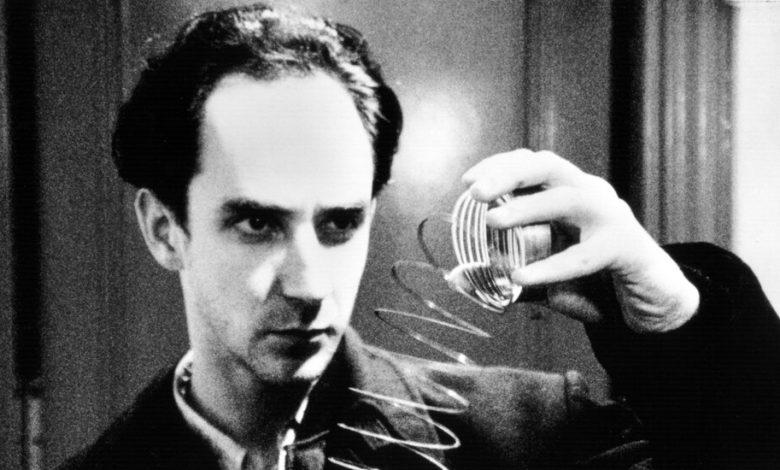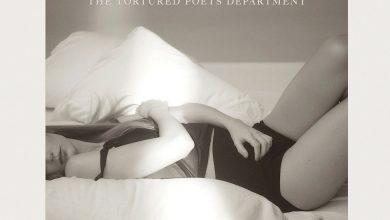Happy 100th Birthday, 16-Millimeter Film

One hundred years ago, the Eastman Kodak Company introduced a shiny new camera that promised to revolutionize moviemaking. The company had been selling filming devices for more than two decades by then, but this novel contraption — the Ciné-Kodak camera, sold with the Kodascope projector — offered a new thrill: the ability to make and screen movies at home, with no special expertise.
The technical marvel, however, wasn’t just the camera but also the film inside. Until 1923, the film used most commonly in motion pictures was 35 millimeters wide. That year, Kodak produced a new format that was only 16 millimeters. The image wasn’t as sharp when you blew it up on the big screen, but it allowed for smaller, cheaper and more portable cameras.
16 millimeter ushered in a new era of movies made outside the Hollywood system. Regular folks could now record their own lives, journalists and soldiers could film in the midst of war, and activists could shoot political documentaries in the street. Until digital video arrived in the late 1990s, 16-millimeter film was the mainstay of the amateur or independent filmmaker, requiring neither the investment nor the know-how of commercial cinema.
Last week, at the New York Public Library for the Performing Arts, which holds thousands of 16-millimeter reels in its collection, the film archivist Elena Rossi-Snook projected some shorts for a group of undergraduates from Marymount Manhattan College. As the projector whirred, a beam of light cut through the darkened room, painting the screen with scenes from the 1946 animated “Boundary Lines,” a stirring movie by Philip Stapp about social integrity in the wake of World War II. That was followed by “The End,” an antiwar stoner comedy directed by a teenager, Alfonso Sanchez, in 1968. The third film, “Black Faces” from 1970, was an ebullient, one-minute montage of portraits of Harlem residents.
These productions, precious documents of the lives and concerns of ordinary Americans, have endured, Rossi-Snook explained, because their makers had relatively cheap and convenient access to film, a medium that can last hundreds of years if stored properly.
Today, 16 millimeter is no longer optimal for the amateur filmmaker. Analog film is increasingly expensive, fewer and fewer labs can process it, and the format doesn’t allow the nearly unlimited shooting and instant playback that video does. But even as it turns 100, 16 millimeter still has a unique look that neither 35-millimeter film nor video can rival.
When projected on the screen, analog film has a three-dimensional, pointillist texture called “grain,” a product of its synthetic makeup. There is more grain in 16 millimeter than in 35 millimeter, resulting in a fuzzier, flickering picture. In the 20th century, that was a drawback for professional filmmakers seeking crisp, theatrical images. But today, as high-definition media saturate our lives, some directors choose 16 millimeter precisely for its rougher look. It reminds us that what we’re watching is not the world as is, but filtered and transformed, with great creativity, through a chemical process.
The filmmaker Darren Aronofsky has shot several movies on 16-millimeter film, including “The Wrestler” (2008), “Black Swan” (2010) and “Mother!” (2017). But when he was making his debut feature, “Pi” (1998), 16 millimeter was a necessity, not a choice. The resolution of available digital cameras wasn’t good enough for feature filmmaking at the time, and Aronofsky couldn’t afford 35 millimeter. But he and his cinematographer, Matthew Libatique, soon realized that 16 millimeter — especially the high-contrast stock they used called reversal film — emphasized the hallucinatory style of “Pi,” a black-and-white psychological thriller that delves into the obsessions of a paranoid number theorist.
“We decided to really lean into 16 millimeter,” Aronofsky said in a phone interview. “I wanted the big grain and the contrast-y look. It’s funny, because we just had the 25th anniversary of the film, and we blew it up for IMAX. And the IMAX people were nervous because of how grainy it was. They wanted to know if I wanted to clear out some of the grain with computer technology. And we said, absolutely not. We loved the look of it.”
Several TV shows from the late ’90s and early 2000s, including “The O.C.” and “Sex and the City,” used Super 16, a variation of 16 millimeter with a larger picture area that gave them a sense of real-time immediacy. The first 10 seasons of “The Walking Dead” were also largely shot on 16 millimeter to capture the grimy, crumbling feel of classic horror cinema.
The cinematographer John Inwood, who filmed 150 episodes of the comedy “Scrubs,” recalled that 16-millimeter cameras, which are smaller and lighter than their 35-millimeter counterparts (and even many contemporary professional video cameras), were crucial in developing the series’s frenetic mockumentary style.
“It was good for ‘Scrubs’ because we moved the cameras a lot, and we were sometimes in tight spaces,” he told me. “We shot in an actual hospital, the former North Hollywood hospital, and we shot in every square inch of it, even down to the morgue.”
As digital cameras have become sharper and more versatile, many filmmakers have turned to 16 millimeter to evoke the analog past and the blurry, precarious nature of memory. In an interview with Gold Derby, Newton Thomas Sigel, who filmed Spike Lee’s “Da 5 Bloods” (2020), said the director had insisted to Netflix that they use 16-millimeter reversal film for the sequences set amid the Vietnam War, despite the costs and logistical challenges. The film had to be shipped from Vietnam to an American lab for processing, and by the time the crew members could see what they had shot, Chadwick Boseman’s acting schedule had already ended. But Lee was adamant that the scenes look authentic, like archival newsreels filmed in the field in the 1970s.
The veteran cinematographer Ed Lachman used Super 16 on two of his collaborations with the director Todd Haynes, both of them period dramas: the mini-series “Mildred Pierce” (2011), and “Carol” (2015), which garnered him an Academy Award nomination.
On both projects, the format was chosen to mimic photographic images from the 1940s and ’50s, and the grittiness of postwar America. But Lachman realized that the grain also brought “tension to the surface of the image,” paralleling the repressive qualities of the characters in both “Mildred Pierce” and “Carol.”
For Lachman, the appeal of 16 millimeter transcends nostalgia. It comes down to cinema’s status as an art, meant to stylize rather than simply reproduce reality. He likened film to painting, and grain to brushstrokes. “The grain changes in each frame with exposure,” he said. “It’s like breathing, almost like an anthropomorphic quality.”
The filmmaker Kelly Reichardt recalled that when she started shooting her 2016 feature, “Certain Women,” she didn’t have the budget for 16 millimeter. But when she and her cameraman, Christopher Blauvelt, did test shoots in Montana, where the film is set, Reichardt was horrified at how “flat” the snow looked on video.
“With film stocks, things weren’t so real looking,” Reichardt said. “A lot of it is grain, and 16 has more grain than 35. So when you blow it up, you don’t get the hard lines that you get in HD, which is what you see in sports.”
A grant ultimately allowed Reichardt to shoot “Certain Women” on 16 millimeter. It made the production more laborious, but the results — soft, textured images of wide roads, snowy mountains and grassy plains, all shimmering with light, dust and shadow — made it worth it.
“I guess it’s about beauty, in a way,” Reichardt said. “I remember on ‘30 Rock’ they did a little thing where Lemon walks in front of the HD camera, and it’s like, she’s a skeleton hag. You know? You see every single thing. It’s very unforgiving. For nature, too.”



